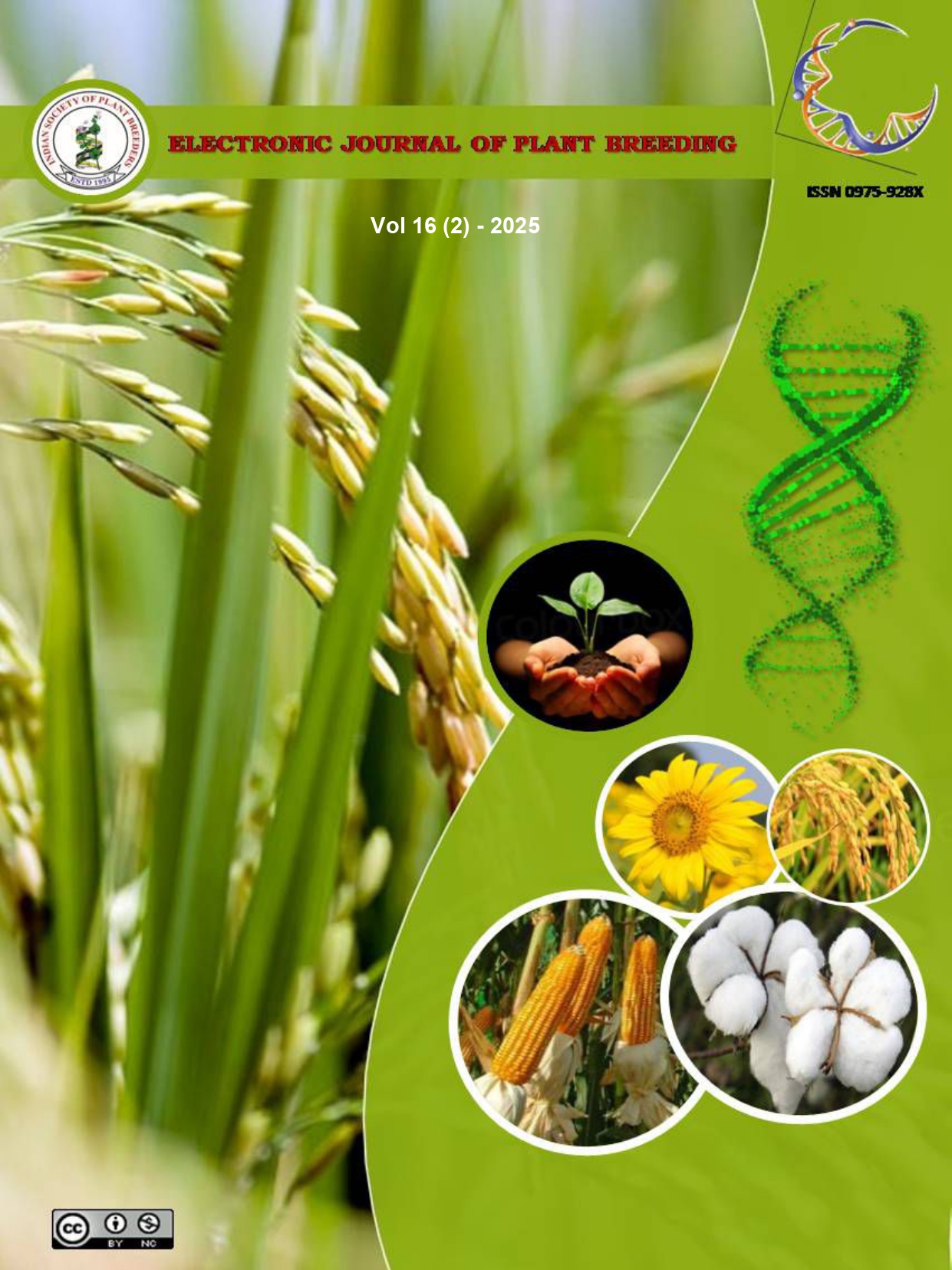Genetic diversity studies for morphological characters and micronutrient content in red rice germplasm
DOI:10.37992/2025.1602.028
Abstract
Rice is the most staple crop of the world consumed by poorest to richest person in this world. However, rice is a poor source of essential micronutrients such as Iron (Fe) and Zinc (Zn). In rice, evaluating genetic diversity is an essential step during the process of development of trait-specific varieties. Genetic diversity studies among red rice germplasm lines was conducted to evaluate 66 red rice lines for morphological traits and zinc, iron and protein content. Three lines, namely Kalavathi, Misebhatta and Karikagga exhibited unique characters for most of the morphological traits. Correlation studies revealed significant positive association of grain yield with grain zinc content. Cluster analysis classified the 66 red rice germplasm lines into nine distinct clusters. Cluster I was the largest and Cluster VI had germplasm with high zinc content and grain yield per plant. Iron content was highest in cluster VIII. The first five components in the principal component analysis with Eigen values >1 contributed to 66.97% of the total variability. Among the germplasm, Shahara, Hallaga and Karthika recorded high zinc, iron and protein content respectively and could serve as potential source for grain nutritional content in red rice.
Keywords: Red rice, micronutrient content, genetic diversity, cluster analysis
Genetic diversity studies for morphological characters and micronutrient content in red rice germplasm
. 2025. Electronic Journal of Plant Breeding, 16 2, 275-287. Retrieved from https://ejplantbreeding.org/index.php/EJPB/article/view/5293It is certified that:
- The corresponding author is fully responsible for any disputes arising due to the publication of his/her manuscript.
- The article has been seen by all the authors who are satisfied with its form and content.
- The sequence of names of authors in the by-line is as per their relative contribution to this experiment, giving due credit to all scientists who made notable contribution to it.
- All the authors fully understand that inclusion of any other co-authors or exclusion of any co-authors is not possible once the article has been submitted to the journal.
- The corresponding author takes full responsibility for this article.
- The address of the organization where the research was conducted is given.
- The article is exclusive for this journal, and the results reported here have not been sent (and will not be sent during its consideration by this journal) for publication in any other journal.
- Authors agree to abide by the objective comments of referees and do agree to modify the article into a short note as per the recommendation, for publication in the Electronic Journal of Plant Breeding.
- If published in Electronic Journal of Plant Breeding, the copyright of this article would vest with the Indian Society of Plant Breeders, who will have the right to enter into any agreement with any organization in India or abroad engaged in reprography, photocopying, storage and dissemination of information contained in it, and neither we nor our legal heirs will have any claims on royalty.



